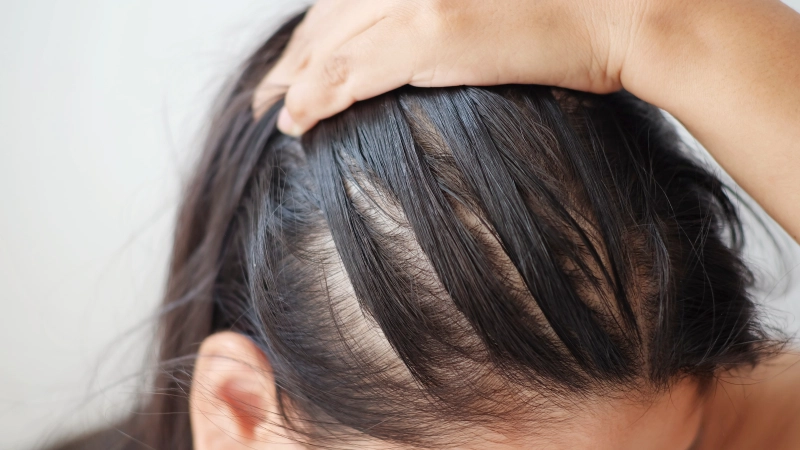
Hair plays a vital role in appearance and confidence. Changes in thickness or density can impact self-esteem and overall well-being. While many assume that balding only affects men, it is also common among women. Several factors contribute to this condition, leading to gradual shedding over time. Identifying the cause helps in finding the right approach for maintaining healthy growth. This article explores the key reasons behind these changes.
Hormonal Imbalances and Women Pattern Baldness
Female pattern baldness often results from fluctuations in hormone levels. Estrogen and other essential hormones help regulate growth cycles. When these levels shift, shedding may increase, leading to noticeable changes in density. Many experience this during pregnancy, menopause, or due to medical conditions affecting hormonal balance.
Testosterone further plays a role in follicle health. An excess of certain hormones may cause follicles to shrink, making it difficult for new strands to grow. This process leads to gradual thinning across the scalp. Recognizing hormonal shifts early can help manage their impact on overall density. Some treatments balance hormone levels to reduce excessive shedding and encourage regrowth.
Genetics and Family History
Inherited traits influence how follicles respond to different factors. Those with a family history of pattern baldness are more likely to experience similar changes. Genetic predisposition determines how sensitive follicles are to hormonal changes, affecting the speed and severity of shedding.
Although patterns of thinning may vary, most cases follow a predictable path. Some notice a gradual widening of the part line, while others see reduced volume across the crown. Understanding family history helps determine potential risks and early signs to watch for. While genetic factors cannot be changed, early detection allows for proactive management to slow down the process.
Nutritional Deficiencies Affecting Growth
A well-balanced diet supports healthy strands, while lacking essential nutrients can contribute to shedding. Iron, vitamin D, and protein deficiencies impact follicle strength, making strands more prone to breakage. Without proper nourishment, growth cycles become disrupted, leading to noticeable thinning.
Iron is essential because it supports oxygen flow to follicles. Low levels may weaken strands, causing increased shedding over time. Adequate vitamin and mineral intake promotes a balanced environment for growth. Dietary changes or supplements may help restore strength and volume. Omega-3 fatty acids and biotin also play a role in maintaining a healthy scalp, reducing excessive loss, and improving texture.
Excessive Stress and Its Impact on Follicles
Physical and emotional stress can contribute to increased shedding. High stress levels disrupt normal cycles, causing more strands to enter the resting phase. This condition, telogen effluvium, leads to noticeable thinning over time. Furthermore, chronic stress may trigger hormonal imbalances, further worsening the condition.
Managing stress through relaxation techniques, exercise, or mindfulness helps maintain balance. Addressing both physical and emotional factors supports overall scalp health and growth patterns. Sleep quality also plays a significant role, as inadequate rest can interfere with regular regrowth cycles, leading to further shedding.
How a Dermatologist Can Help Manage Pattern Baldness
A professional dermatologist from a reputed clinic is essential in identifying the underlying causes of pattern baldness and recommending effective strategies. Through detailed scalp examinations, they assess follicle health, shedding patterns, and potential triggers such as hormonal imbalances, nutritional deficiencies, or stress-related factors.
Dermatologists provide personalized guidance based on individual needs. They may suggest scalp treatments, lifestyle adjustments, or targeted therapies to improve density and overall health. Identifying early signs of change helps prevent further thinning and supports long-term growth. Seeking professional advice from renowned clinics ensures a well-informed approach to maintaining natural volume and strength. Sometimes, dermatologists also recommend medical or noninvasive options that promote healthy regrowth.
Hormones, genetics, nutrition, and stress levels influence female pattern baldness. Identifying the cause helps find effective ways to maintain scalp health. Choosing the right approach ensures better long-term outcomes while supporting overall well-being. Proactive care and guidance from a dermatologist at reliable clinics can significantly improve thickness preservation and promote healthy regrowth.




